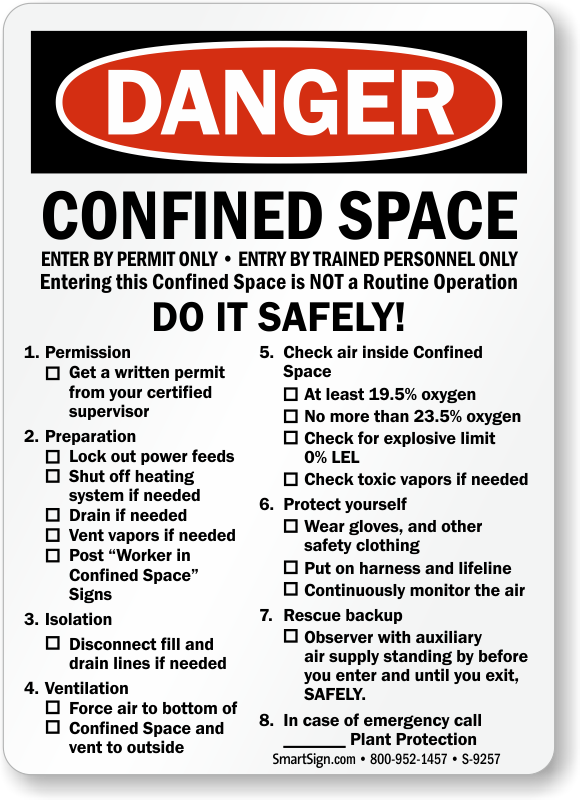Subsection 1.1.7 Confined Spaces
A confined space is defined by OSHA as a space that has limited or restricted means of entry, is not designed for continuous occupancy, and is large enough and configured so that a person can enter the space and maneuver well enough to perform tasks.
Confined spaces pose several hazards that can endanger workers who enter them due to their limited entry and exit points, restricted airflow, and potential for hazardous atmospheres.
On ships, some examples of confined spaces include: Cargo and fuel tanks, cofferdams, pressure vessels, sewage tanks, and void spaces.

Here are some hazards associated with confined spaces:
Lack of oxygen.
Confined spaces often have limited ventilation, which can lead to a decrease in oxygen levels. This oxygen-deficient atmosphere can cause dizziness, loss of consciousness, or even asphyxiation.
Toxic gases and vapors.
Confined spaces may contain hazardous gases or vapors, such as carbon monoxide, hydrogen sulfide, or volatile chemicals. These substances can accumulate in the confined space and pose a serious health risk to individuals who inhale them, leading to poisoning or respiratory problems.
Fire and explosion risks.
Confined spaces may contain flammable substances, inadequate electrical systems, or potential ignition sources. This combination can result in the rapid escalation of fire or explosion hazards, especially in spaces with limited airflow and potential fuel accumulation.
Engulfment or entrapment.
Confined spaces often have small openings or tight access points. If an individual becomes trapped or engulfed by materials, such as loose soil, water, or flowing grain, it can lead to serious injury, suffocation, or drowning.
Physical hazards.
Confined spaces may have uneven surfaces, protruding objects, or low ceilings, increasing the risk of slips, trips, falls, and head injuries. Limited visibility and restricted movement within the space can further contribute to accidents and make rescue difficult.
Extreme temperatures.
Some confined spaces can experience extreme temperatures due to insulation issues, lack of ventilation, or the presence of heat-generating equipment. Excessive heat or cold can cause thermal discomfort, heat exhaustion, hypothermia, or heat stroke.
Emergency repairs to boilers must sometimes be made before the boiler has had a chance to cool down.
Biological hazards.
In certain confined spaces, such as sewage tanks or areas with stagnant water, there may be an increased risk of exposure to bacteria, viruses, or mold, which can lead to respiratory issues, allergies, or infectious diseases.
For safe entry into a confined space, everyone involved should be properly trained on confined space entry and rescue techniques and strictly comply with all regulations and guidelines governing confined space entry.
Begin by conducting a thorough risk assessment to identify potential hazards and establish necessary control measures. Inspect the equipment used for entry to guarantee its reliability.
Ensure proper ventilation is in place, to maintain fresh air and remove hazardous substances. Test the atmosphere using gas detection equipment before entering to verify safe conditions. Wear the appropriate personal protective equipment (PPE), including respiratory protection and fall protection gear.
Maintain proper lighting to ensure visibility within the confined space. Establish effective communication systems between individuals inside and outside the space. Designate a standby person outside the space, equipped with rescue training, to provide immediate assistance if required.

